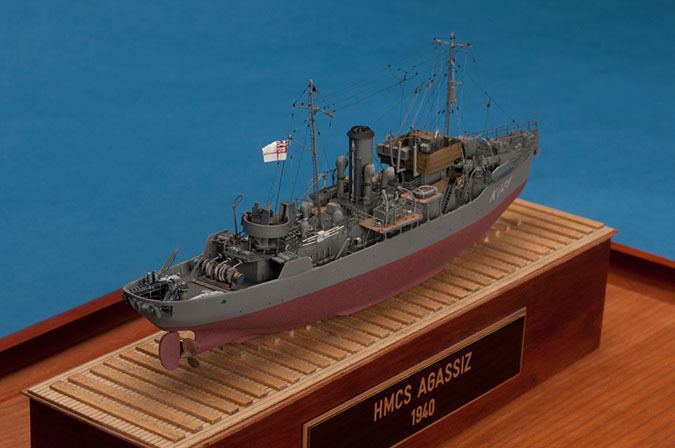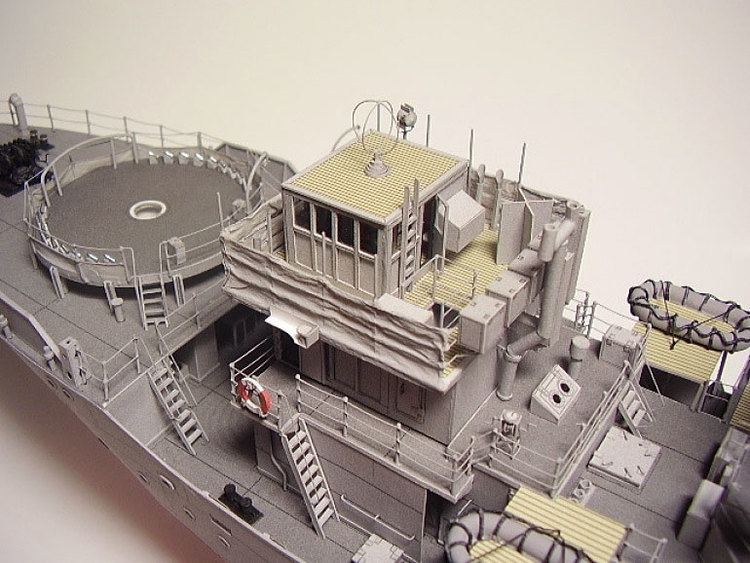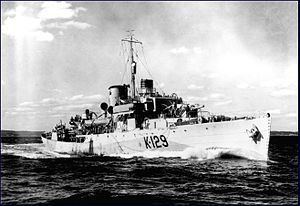Name Agassiz Ordered 14 February 1940 Commissioned 23 January 1941 Launched 15 August 1940 Draft 3.51 m | Laid down 29 April 1940 Construction started 29 April 1940 Length 62 m Builder Burrard Dry Dock | |
 | ||
Namesake Agassiz, British Columbia | ||
HMCS Agassiz was a Flower-class corvette of the Royal Canadian Navy. She served primarily in the Battle of the Atlantic as an ocean escort for convoys during the Second World War. She was named after the community of Agassiz, British Columbia.
Contents

Background
Flower-class corvettes like Agassiz serving with the Royal Canadian Navy during the Second World War were different from earlier and more traditional sail-driven corvettes. The "corvette" designation was created by the French as a class of small warships; the Royal Navy borrowed the term for a period but discontinued its use in 1877. During the hurried preparations for war in the late 1930s, Winston Churchill reactivated the corvette class, needing a name for smaller ships used in an escort capacity, in this case based on a whaling ship design. The generic name "flower" was used to designate the class of these ships, which – in the Royal Navy – were named after flowering plants.

Corvettes commissioned by the Royal Canadian Navy during the Second World War were named after communities for the most part, to better represent the people who took part in building them. This idea was put forth by Admiral Percy W. Nelles. Sponsors were commonly associated with the community for which the ship was named. Royal Navy corvettes were designed as open sea escorts, while Canadian corvettes were developed for coastal auxiliary roles which was exemplified by their minesweeping gear. Eventually the Canadian corvettes would be modified to allow them to perform better on the open seas.
Construction

Agassiz was ordered on 14 February 1940 as part of the 1939-1940 Flower class building program. She was laid down on 29 April 1940 by Burrard Dry Dock Co. Ltd. in North Vancouver, British Columbia and was launched on 15 August 1940. Agassiz was commissioned on 23 January 1941 in Vancouver, British Columbia.
Agassiz had two major refits during her career. The first took place at Liverpool, Nova Scotia from early January 1943 until mid-March. The second took place at New York, beginning in December 1943 and taking until March 1944 to complete. During her second refit, her fo'c'sle was extended.
War duty

After completion Agassiz was sent to Halifax, arriving 13 April 1941. In May 1941 she was assigned to the Newfoundland Escort Force. She served continuously as an ocean escort until the end of 1943. In August 1941, Agassiz was part of the escort 57-ship HX 143 convoy, which was guided around a U-boat concentration in the North Atlantic. On 1 September 1941, the escort groups were reformed and Agassiz joined Escort Group 19.
On 18 September 1941, the German submarine U-74 sighted the convoy SC 44 in the North Atlantic. The convoy was guarded by the destroyer HMS Chesterfield and the corvettes Agassiz, HMCS Mayflower, HMCS Levis and HMS Honeysuckle. Only four U-boats move to engage and during the first night of battle, Levis is sunk. Agassiz recovered her survivors. Four merchant vessels are sunk as well on 18/19 September. In response to the sinkings, the convoy protection is enhanced with the arrival of three more corvettes.
She participated in the battle for convoy ON 102 with Mid-Ocean Escort Force (MOEF) group A3 in July 1942. She also fought the battles for convoy SC 97 with MOEF group C2 and the battles for convoy ON 115 and convoy SC 109 with MOEF group C3. Following her workups after her first major refit in early 1943, Agassiz was assigned to MOEF group C1 and escorted 12 trans-Atlantic convoys without loss before another yard overhaul in early 1944. After that overhaul, Agassiz escorted North American coastal convoys with the Western Local Escort Force from March 1944 until February 1945. In April 1944, she was assigned to escort group W-2 and in August of that year to W-7. She remained with that group until the end of the war.
Following the end of hostilities Agassiz was paid off 14 June 1945 at Sydney, Nova Scotia. She was sold for scrap November 1945 and broken up at Moncton, New Brunswick in 1946.
